Abstract
The large intestinal flora of the leopard frog, Rana pipiens, was examined to determine whether differences existed between the nonhibernating and hibernating states of the animal and to determine the relative concentrations and proportions of potential frog pathogens. Hibernators had a logarithmic decrease of bacteria per milligram of intestine averaging one, and significantly greater proportions of facultative bacteria and psychrophiles relative to nonhibernators. The predominant anaerobic bacteria were gram-positive Clostridium species and gram-negative Bacteroides and Fusobacterium species. The predominant facultative bacteria were enterobacteria in nonhibernators but Pseudomonas species in hibernators. Many species of Pseudomonas are pathogenic for frogs, and thus the intestinal flora in hibernators may be a potential source of infectious disease.
Full text
PDF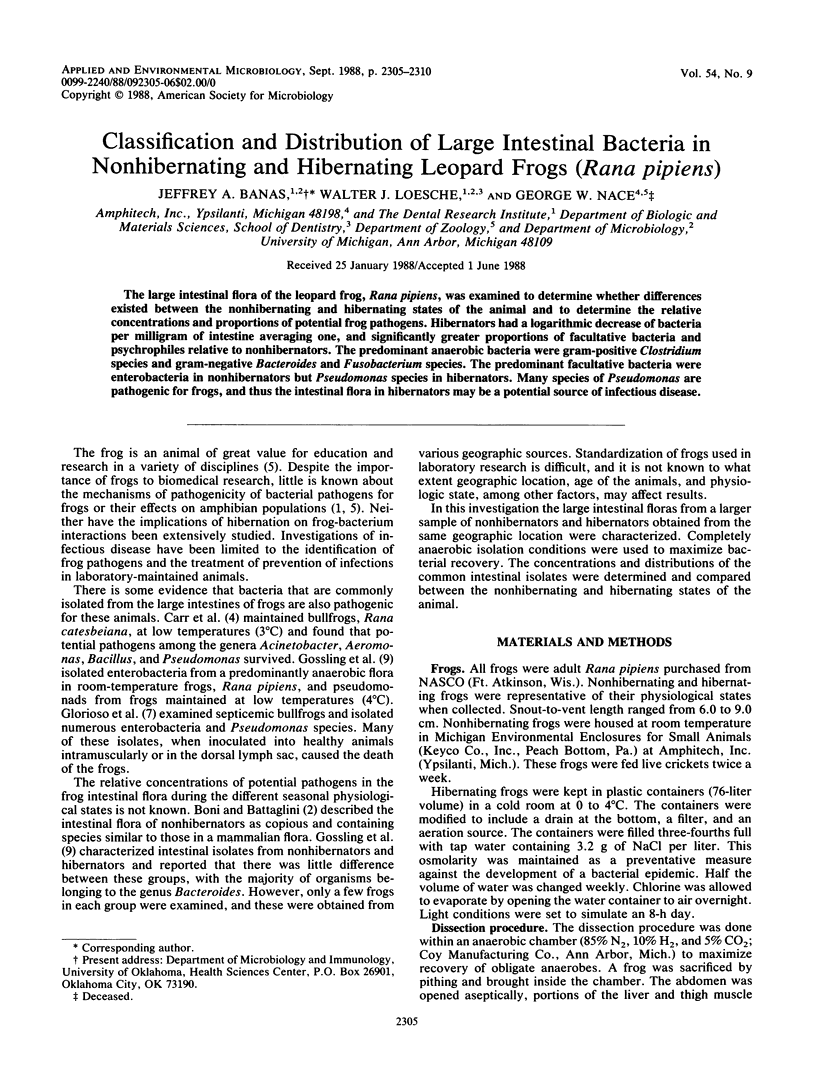
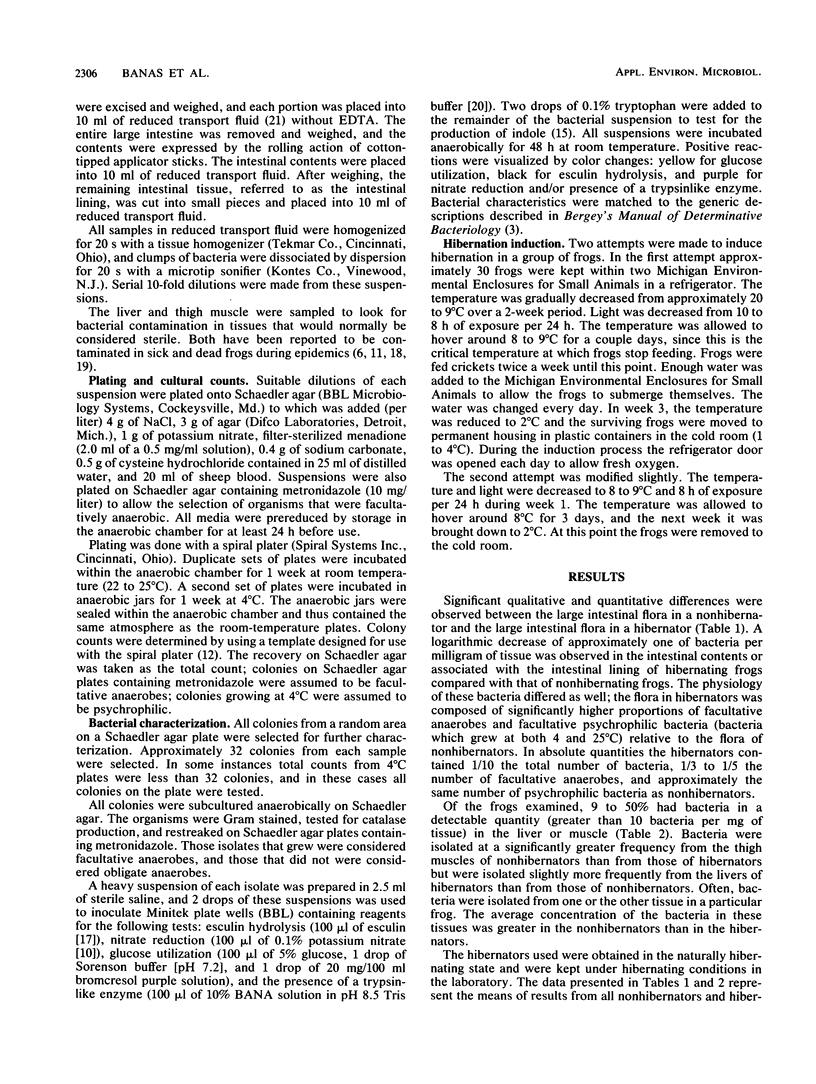
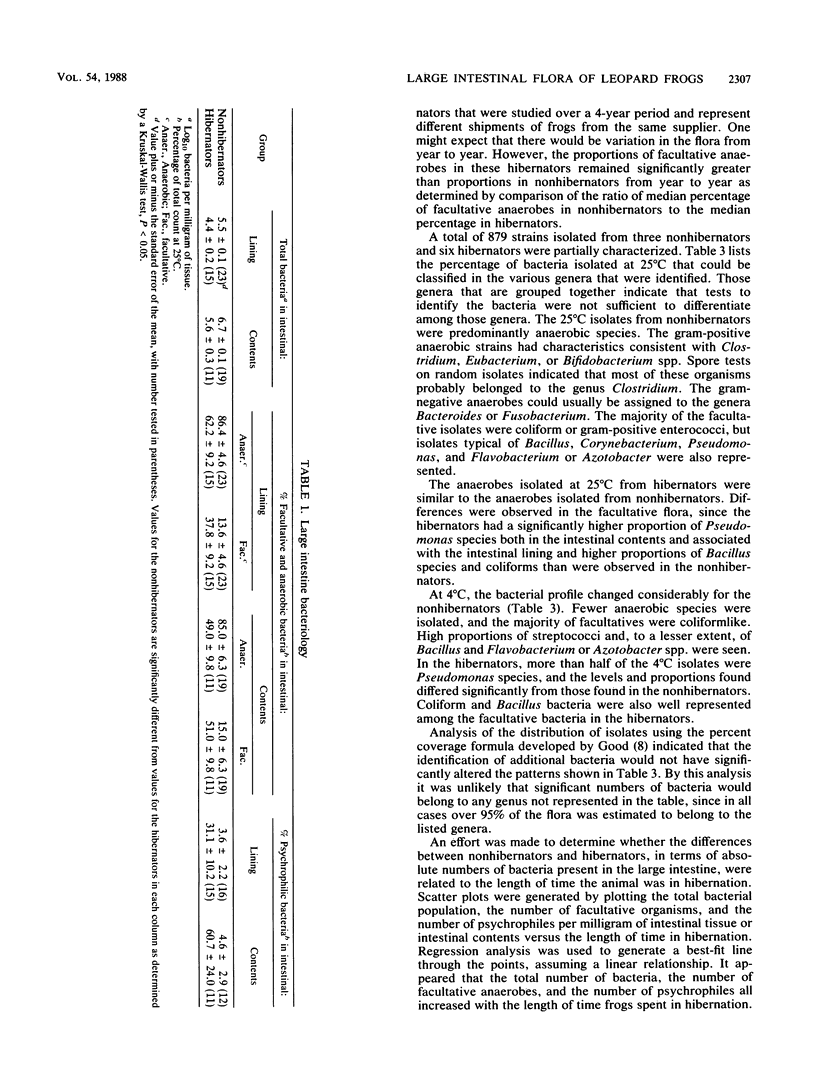
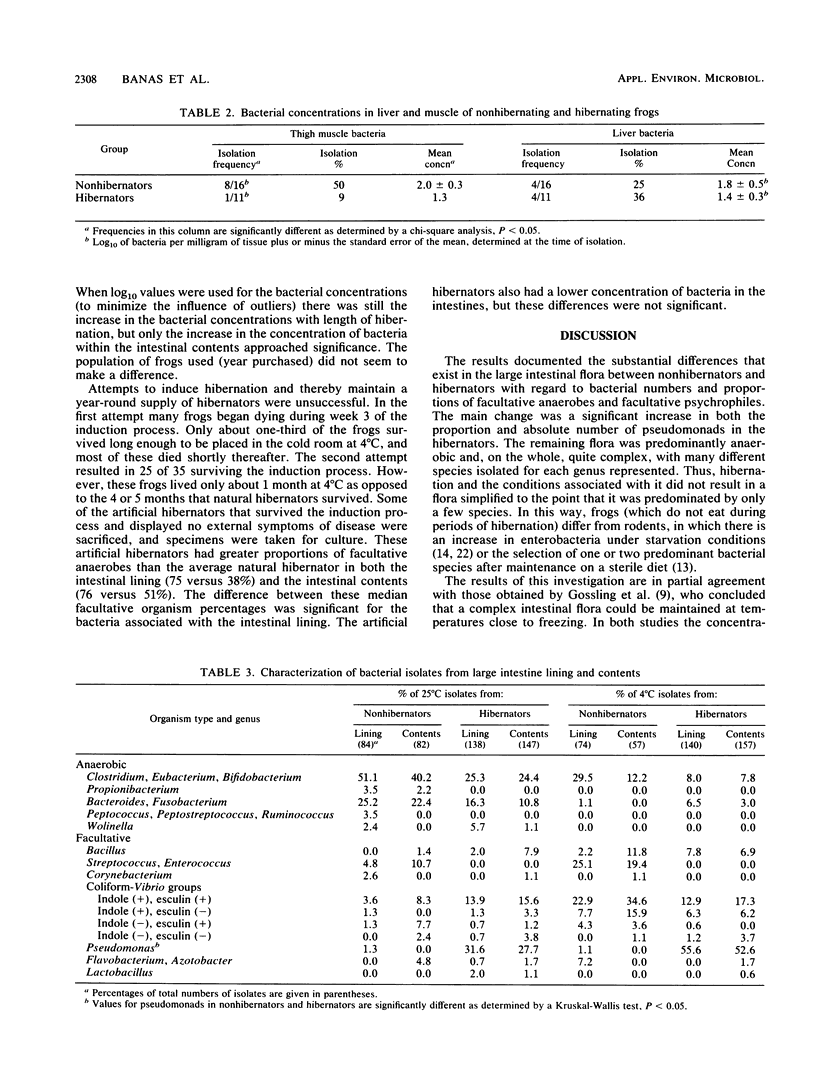
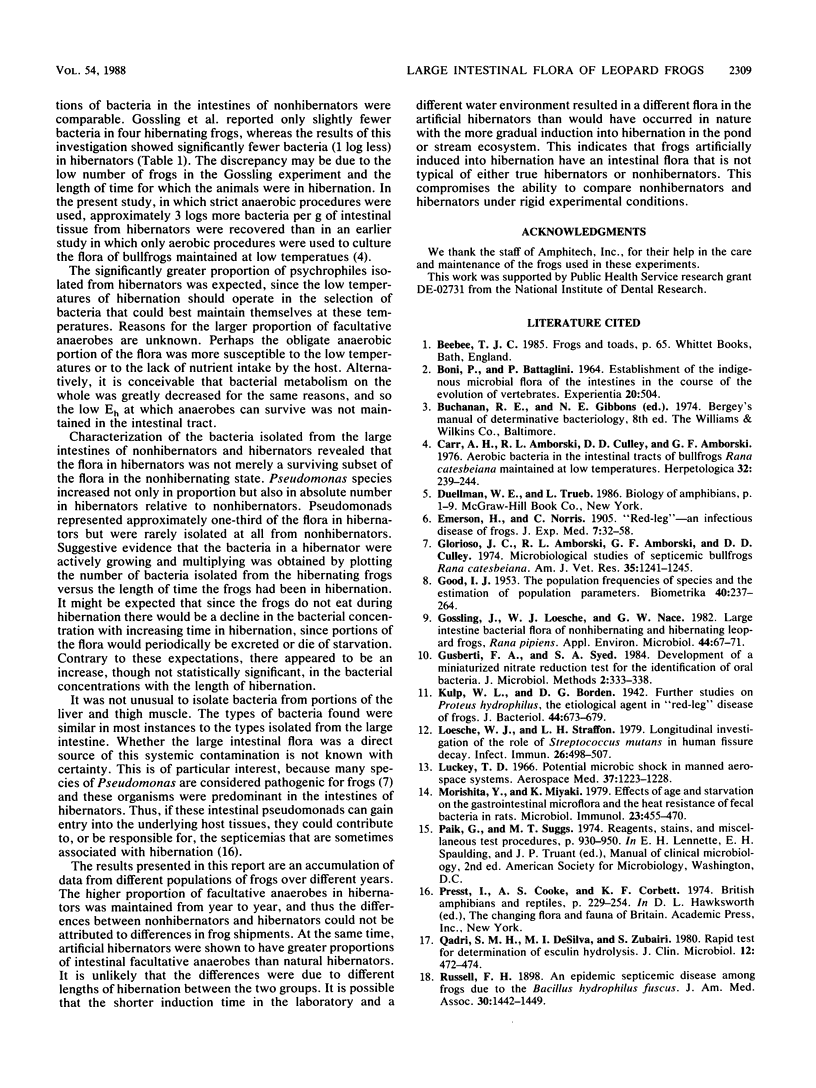
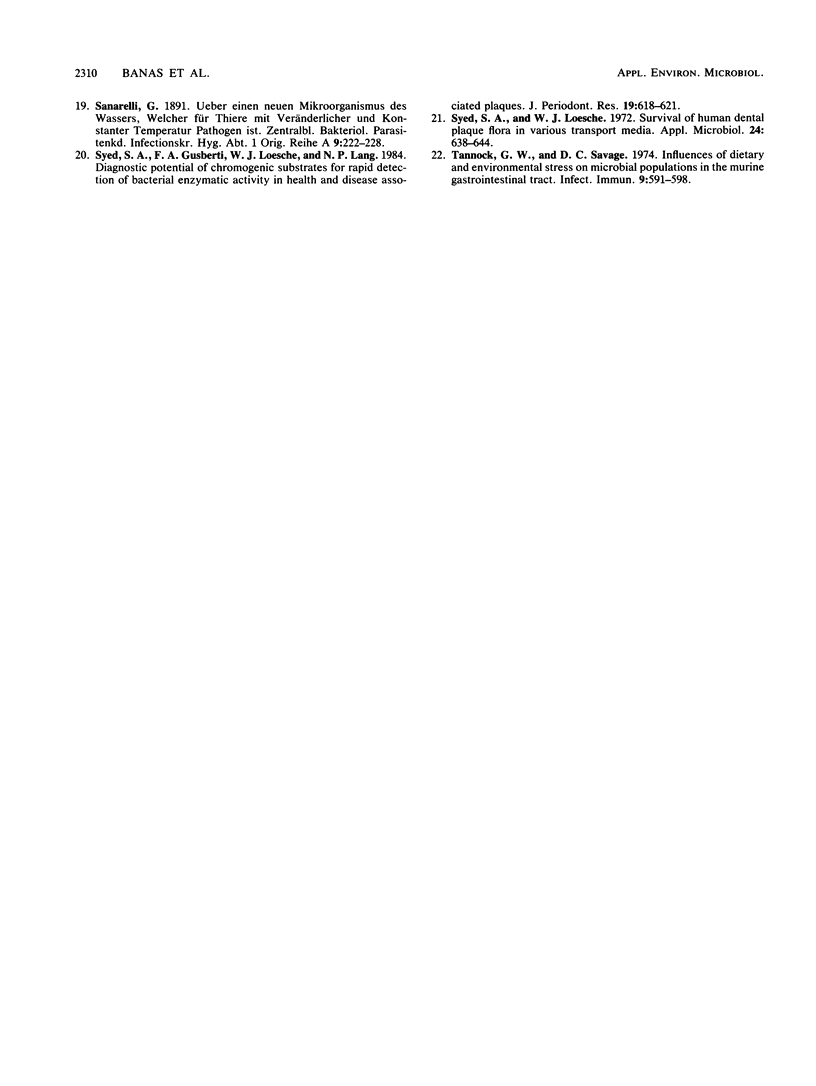
Selected References
These references are in PubMed. This may not be the complete list of references from this article.
- Boni P., Battaglini P. Establishment of the indigenous microbial flora of the intestines in the course of the evolution of vertebrates. Experientia. 1964 Sep 15;20(9):504–504. doi: 10.1007/BF02154075. [DOI] [PubMed] [Google Scholar]
- Glorioso J. C., Amborski R. L., Amborski G. F., Culley D. D. Microbiological studies on septicemic bullfrogs (Rana catesbeiana). Am J Vet Res. 1974 Sep;35(9):1241–1245. [PubMed] [Google Scholar]
- Gossling J., Loesche W. J., Nace G. W. Response of intestinal flora of laboratory-reared leopard frogs (Rana pipiens) to cold and fasting. Appl Environ Microbiol. 1982 Jul;44(1):67–71. doi: 10.1128/aem.44.1.67-71.1982. [DOI] [PMC free article] [PubMed] [Google Scholar]
- Kulp W. L., Borden D. G. Further Studies on Proteus hydrophilus, the Etiological Agent in "Red Leg" Disease of Frogs. J Bacteriol. 1942 Dec;44(6):673–685. doi: 10.1128/jb.44.6.673-685.1942. [DOI] [PMC free article] [PubMed] [Google Scholar]
- Loesche W. J., Straffon L. H. Longitudinal investigation of the role of Streptococcus mutans in human fissure decay. Infect Immun. 1979 Nov;26(2):498–507. doi: 10.1128/iai.26.2.498-507.1979. [DOI] [PMC free article] [PubMed] [Google Scholar]
- Luckey T. D. Potential microbic shock in manned aerospace systems. Aerosp Med. 1966 Dec;37(12):1223–1228. [PubMed] [Google Scholar]
- Morishita Y., Miyaki K. Effects of age and starvation on the gastrointestinal microflora and the heat resistance of fecal bacteria in rats. Microbiol Immunol. 1979;23(6):455–470. doi: 10.1111/j.1348-0421.1979.tb00485.x. [DOI] [PubMed] [Google Scholar]
- Qadri S. M., DeSilva M. I., Zubairi S. Rapid test for determination of esculin hydrolysis. J Clin Microbiol. 1980 Sep;12(3):472–474. doi: 10.1128/jcm.12.3.472-474.1980. [DOI] [PMC free article] [PubMed] [Google Scholar]
- Syed S. A., Gusberti F. A., Loesche W. J., Lang N. P. Diagnostic potential of chromogenic substrates for rapid detection of bacterial enzymatic activity in health and disease associated periodontal plaques. J Periodontal Res. 1984 Nov;19(6):618–621. doi: 10.1111/j.1600-0765.1984.tb01327.x. [DOI] [PubMed] [Google Scholar]
- Syed S. A., Loesche W. J. Survival of human dental plaque flora in various transport media. Appl Microbiol. 1972 Oct;24(4):638–644. doi: 10.1128/am.24.4.638-644.1972. [DOI] [PMC free article] [PubMed] [Google Scholar]
- Tannock G. W., Savage D. C. Influences of dietary and environmental stress on microbial populations in the murine gastrointestinal tract. Infect Immun. 1974 Mar;9(3):591–598. doi: 10.1128/iai.9.3.591-598.1974. [DOI] [PMC free article] [PubMed] [Google Scholar]


